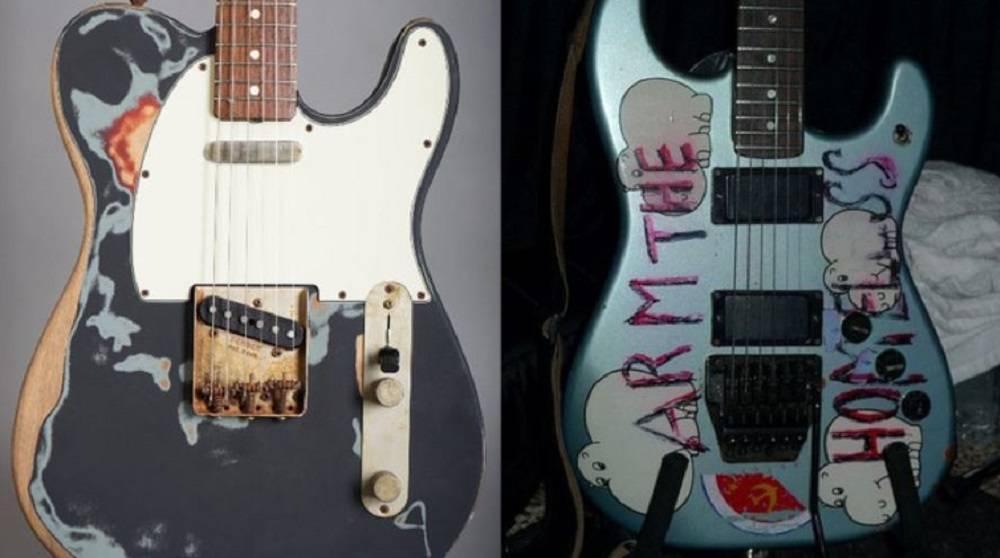
Top 10 Iconic Electric Guitars in Punk Rock
UG runs down the 10 best-known electric guitars from the punk rock world.
Punk rock is about as amorphous as a genre of music can be. With dozens of sub-genres, movements, and branches on the family tree that intertwine with metal, pop, classic rock, hip hop, and alternative music. As such, it has featured a diverse cast of musicians, guitarists, and guitar gear. Especially when you consider the DIY mentality that drove the scene for years, you quickly realize that the gear is a bit more diverse and unexpected than more traditional blues and classic rock rigs. Budgets were low, players often used whatever they could get their hands on, and the guitar’s needed to take a beating night in and night out.
You’ll probably notice that I excluded some very compelling guitars and guitarists from punk’s history. I mean no disrespect to their amazing legacies, but how many times can we highlight the fact that Steve Jones, Mick Jones, Tim McIlrath, Eric Melvin, and Brian Baker all used standard Les Pauls. These are truly great guitars that are iconic, but not instruments that necessarily make me think of punk rock when I see them on stage. Instead, this top 10 list reflects what are, in my opinion, the guitars that instantly bring the words and music of the punk scene to my brain.
10. Billy Zoom’s Gretsch 6129 Jet
X’s Billy Zoom had an absolute gem of a guitar compared to most of his peers in the ’80s LA punk scene. A rather well-made, and pricey Gretsch 6129 Jet that was a nod to his rockabilly roots and upbringing. Zoom is more known for his amplifier modification prowess, but few images better classify the development of American punk than Zoom and his Gretsch Jet on stage. Zoom’s guitar work is one of the classic scenes depicted in the Decline of Western Civilization, forever preserving X’s role in the development of punk.
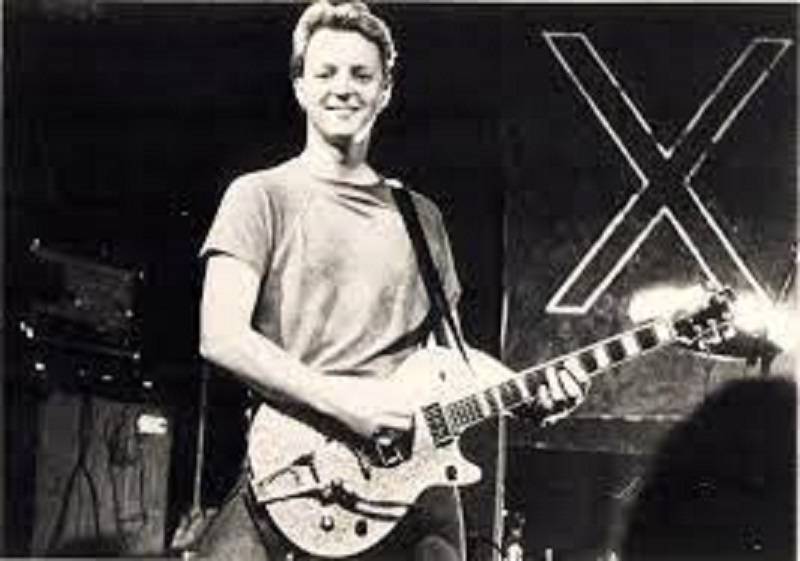
9. Wayne Kramer’s American Flag Stratocaster
While the MC5 might be better classified as classic rock, hard rock, or proto-punk everything about them is punk rock. Their political leanings, raucous live shows, and general lack of respect for establishments make them one of the blueprints from which The Sex Pistols, Stooges, Clash, and many others would learn from. And nothing is more iconic than Wayne Kramer playing his hard rock riffs in “Kick Out The Jams” on his American Flag Stratocaster. It’s one part middle finger to America, one part example of how the country’s cultural and political directions are ever-evolving and changing. It’s also incredible that the humbucker is in the middle position, adding an element of complete chaos to the guitar.
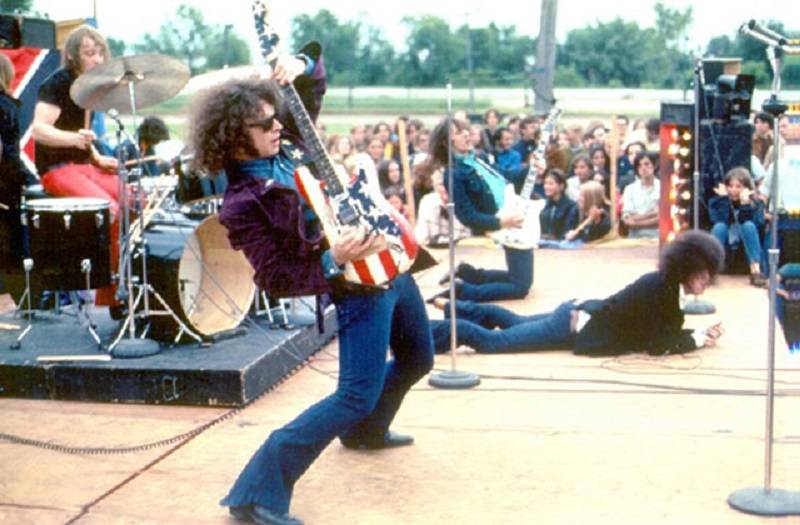
8. Dr. Know’s “Old Blackie” ESP Strat
Bad Brains and their guitarist Dr. Know helped launch the hardcore subgenre of punk that would go on to dominate prior to the advent of skate and pop-punk in the ’90s. After losing his two previous guitars, Dr. Know went to ESP in its very early days and acquired an HSS-style ESP Strat with hum-canceling single-coil-sized pickups and a normal humbucker in the bridge. This guitar would be his main instrument for years, through their hardcore and reggae eras. It’s incredibly important, much like Dr. Know’s playing, to the diversity of styles that punk would soon embrace as reggae, alternative rock, and even some jazz-adjacent playing styles would become more and more accepted into the movement.
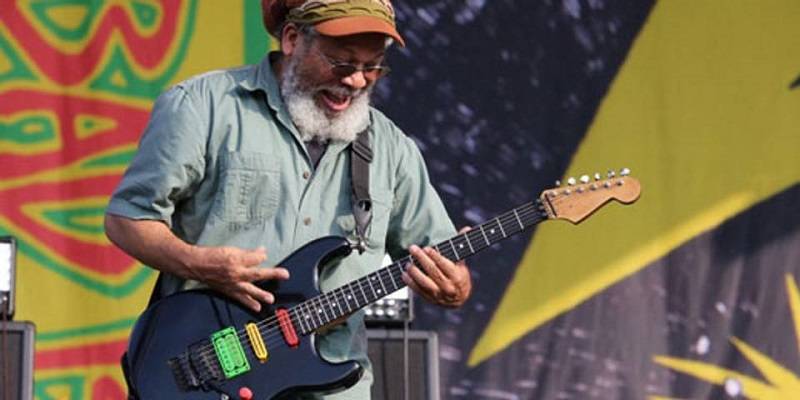
7. Tom Morello’s Arm The Homeless Guitar
What more can be said about Tom Morello’s genre-bending career and impact on the guitar? He is one of the coolest guitar heroes ever, full stop. And while he isn’t just a punk rock guy, with rock, metal, folk, and hip hop-adjacent flavors just as prominent, no guitar has done more for rebellion than his Arm The Homeless partscaster. Morello is undeniably punk in his roots, and his guitar has always reflected that throughout his career. In fact, his guitar is responsible for some of the most creative playing in the greater punk rock world.
6. Mike Ness’s Les Paul Deluxe
When I think of a Les Paul playing punk (but not a Les Paul Junior), I always come back to Social Distortion’s Mike Ness. The frontman and guitarist has been a pillar of American punk since 1978, with a killer vintage Les Paul loaded with P90s. Ness and his gold top LP went from hardcore punk in their earlier career to their signature “cowpunk” sound. Mixing blues, classic rock n roll, and rockabilly in with their original raw punk aggression. Gibson just announced a custom shop replica of his ’76 gold top, helping to further cement its status as one of punk’s most famous instruments.
5. Billie Joe Armstrong’s “Blue” Fernandes Strat
While Billie Joe Armstrong has more recently relied on Gibson and Gretsch guitars, his most iconic guitar is the Fernandes Stratocaster copy dubbed “Blue”. It features an angled humbucker as a tribute to one of his guitar heroes, EVH, and is covered in stickers (as all good guitars should be). It’s also one of the most unique and instantly recognizable instruments from the 1990s. While Green Day is certainly pop-punk-oriented, Dookie was never really intending to be a pop effort. It was fun, immature, and going off the rails, everything punk should be. Blue is no different and represents the humble means most punks had to build a rig around. A simple, student guitar, with some mods, stickers, and you can sell millions of records.
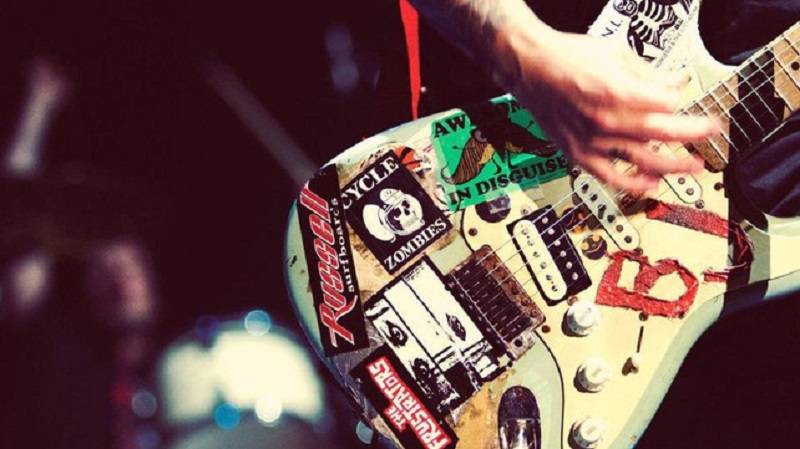
4. Johnny Thunders’ Les Paul Junior
The Les Paul Junior has been a staple of punk rock as long as it has formally existed as a movement. Billie Joe Armstrong, Brian Baker, Mick Jones, so many amazing musicians have used the single P90 Gibson to create masterpieces of anti-establishment music. All of that traces back to Johnny Thunders of the New York Dolls. Equal parts glam rock and punk rock, the Dolls have had a huge impact on the formation of punk musically and aesthetically. Johnny Thunders is almost single-handedly responsible for making the Les Paul Junior a punk guitar.
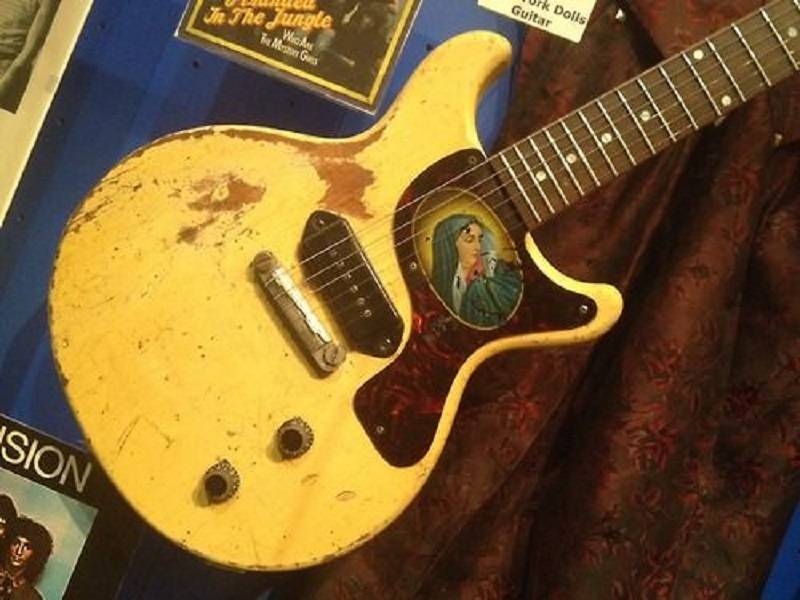
3. Greg Ginn’s Dan Armstrong Plexi
While I am admittedly not the biggest fan of the direction punk went in the ’80s, Greg Ginn and Black Flag did a lot of heavy lifting to keep the genre alive, thriving, and moving forward into the ’90s on. When I think of punk, I often think of the Decline of Western Civilization film that heavily featured Ginn and Blag Flag, alongside Zoom. The image of him standing on the stage churning out riffs as Ron Reyes runs around is about as iconic as it gets. The Dan Armstrong guitars have also achieved a cult following, making them very desirable and expensive. But at the time, they were a heavy and strange alternative to anything else on the market. If Ginn picked it on purpose to stand out, good for him. If not, well he certainly must be just as surprised at how much larger than life this guitar has become.
2. Joe Strummer’s Telecaster
Oh, how I wanted this to be #1, but that would be far too biased of me. Ironically, Strummer was never that much of a guitar player and rarely recorded guitar in the studio for The Clash. At the same time, he was punk’s greatest guitar anti-hero who influenced thousands of young kids to pick up a guitar and play as a form of protest. His sticker-covered, heavily abused Telecaster is a universal symbol for punk rock, protest, and political activism. Punk has often been linked to anarchy and violence, but The Clash and Strummer proved decisively that it was a much more well thought out and socially conscious movement. And this Telecaster was the instrument used to deliver that message.
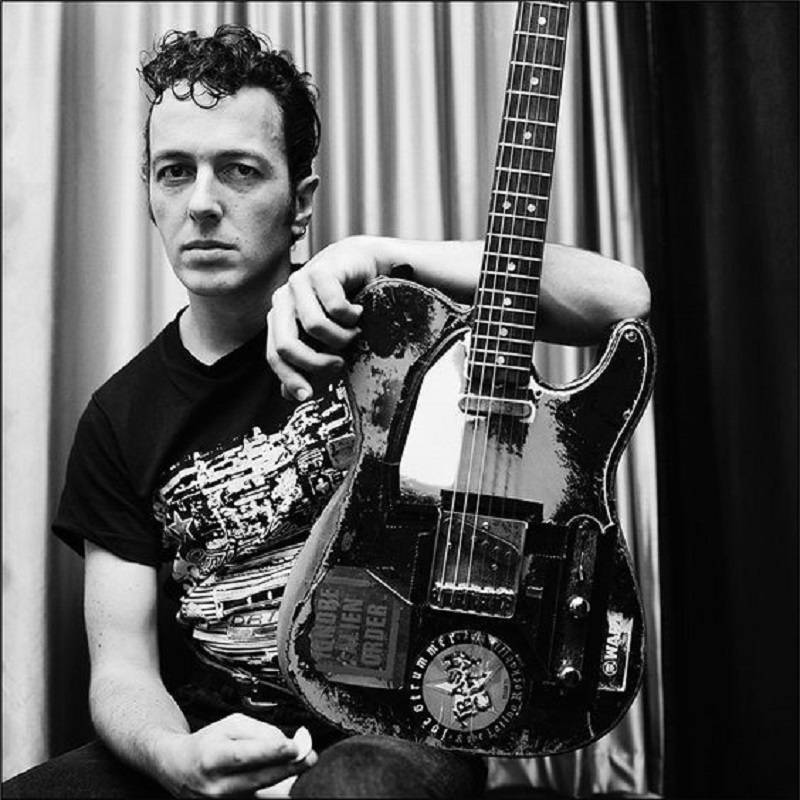
1. Johnny Ramone’s Mosrite Ventures II
I’m sure you expected to see this, but Johnny Ramone’s Mosrite is synonymous with the sound of punk guitar. The ferocity of a buzzsaw, the volume of an explosion, this was the most pure source of sonic inspiration for the bands that came after them. Everything about the Ramones was a caricature, from their matching outfits to their mop haircuts and the Mosrite Ventures II was no different. Encapsulating the “use whatever you have” mentality that morphed into the DIY punk movement. No Fender, no Gibson, no crazy upgrades, just a connection between a guitar and the player. What’s more punk than that?
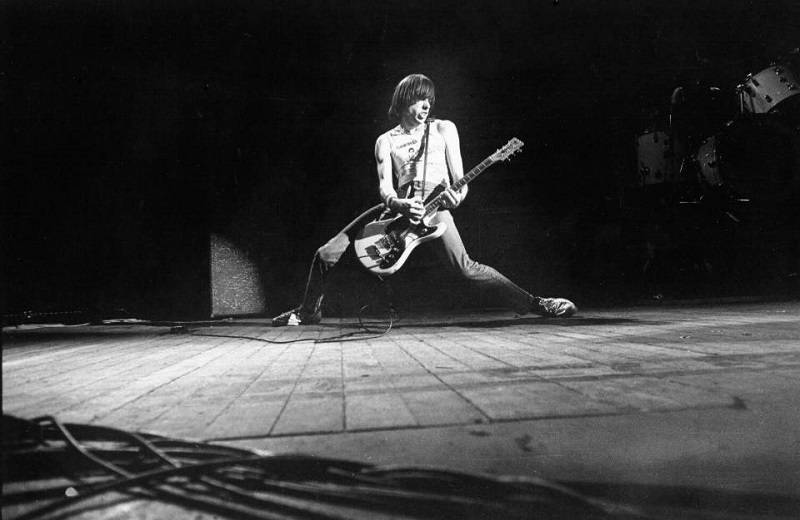

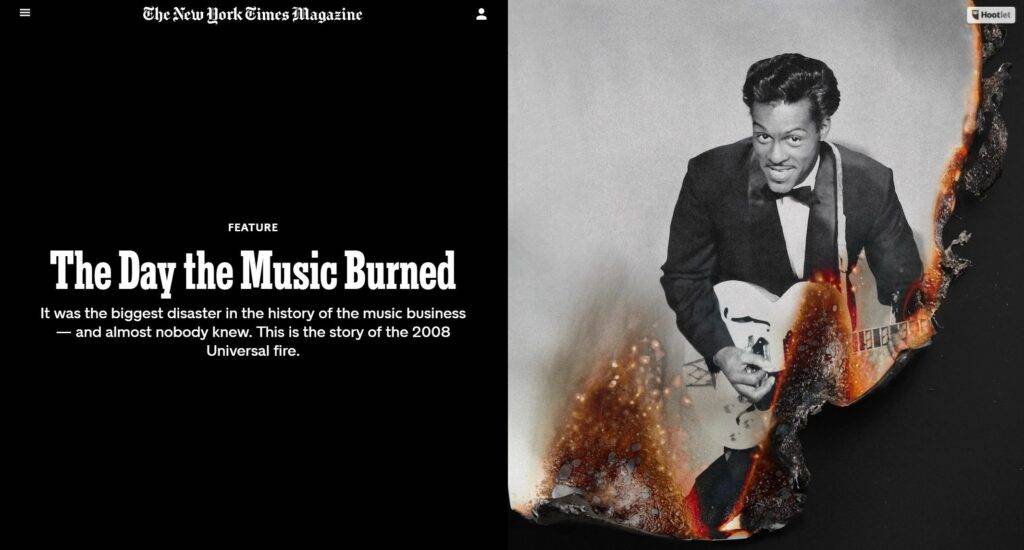

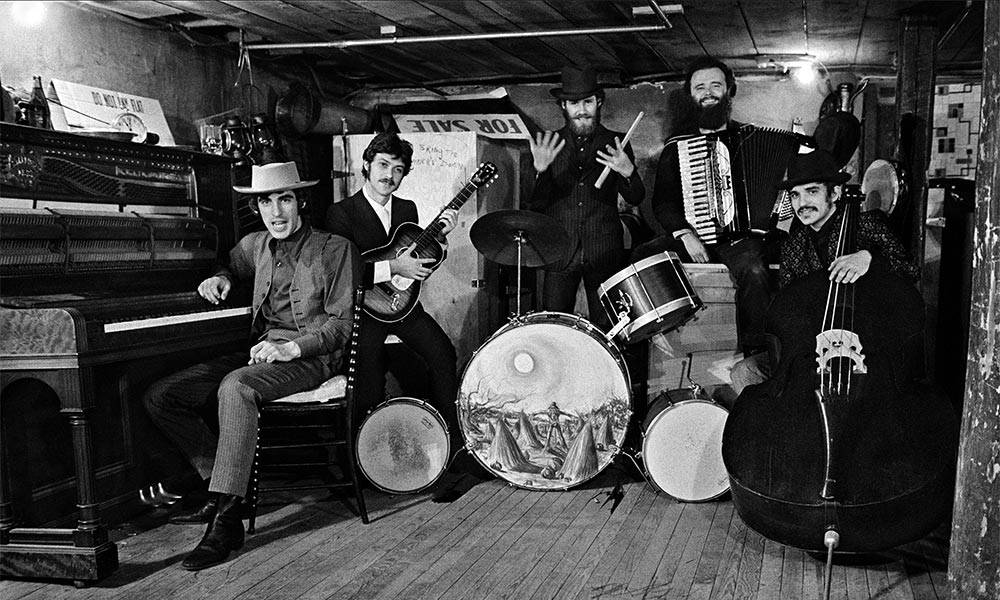
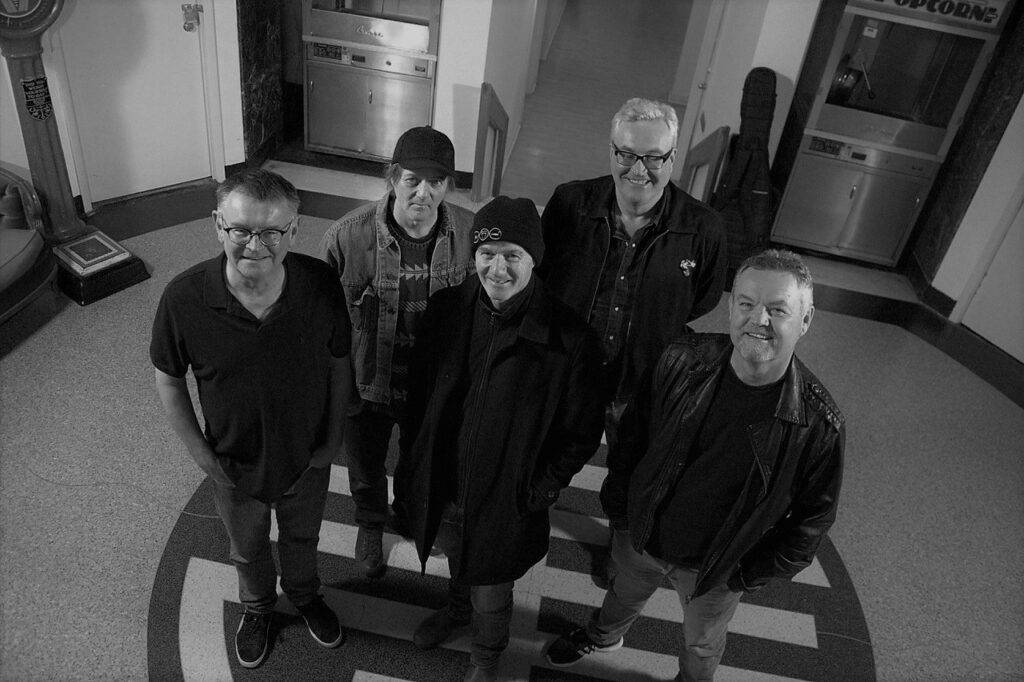

Responses